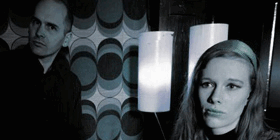
VCO (Voltage-Controlled Oscillator)
VCO (Voltage-Controlled Oscillator)
A Brief History
The VCO, or Voltage-Controlled Oscillator, is a type of electronic oscillator that produces a signal whose frequency is controlled by an external voltage. VCOs are used in a wide variety of electronic music synthesizers, drum machines, and other electronic instruments.
The Early Years
The first VCOs were developed in the early 1960s by electronic music pioneers such as Robert Moog and Don Buchla. These early VCOs were analog devices that used vacuum tubes or transistors to generate their signals.
The 1970s
In the 1970s, digital VCOs began to be developed. Digital VCOs offered a number of advantages over analog VCOs, including greater accuracy and stability.
The 1980s
VCOs became a standard feature on many electronic music synthesizers and drum machines in the 1980s. VCOs were used to create a variety of sounds, including sine waves, sawtooth waves, square waves, and triangle waves.
The 1990s and Beyond
VCOs continue to be a popular and versatile tool for electronic musicians. VCOs are used to create a wide variety of sounds, including:
Basic waveforms: VCOs can be used to generate basic waveforms, such as sine waves, sawtooth waves, square waves, and triangle waves. These waveforms are the foundation of many electronic music sounds.
Complex waveforms: VCOs can be used to generate complex waveforms, such as FM waves, PM waves, and wavetables. These waveforms can be used to create a variety of unique sounds.
Modulation: VCOs can be used to modulate other parameters of a synthesizer, such as the pitch of an oscillator or the filter cutoff frequency. This can be used to create a variety of effects, such as vibrato, tremolo, and filter sweeps.
The Elements of a VCO
VCOs typically have the following elements:
Frequency control: The frequency control of a VCO is the voltage that determines the frequency of the oscillator.
Amplitude control: The amplitude control of a VCO is the voltage that determines the amplitude of the oscillator.
Waveform selection: VCOs typically offer a variety of waveform options, such as sine waves, sawtooth waves, square waves, and triangle waves.
Other features: VCOs may also offer other features, such as pulse width modulation (PWM), frequency modulation (FM), and phase modulation (PM).
VCO Applications
VCOs can be used in a wide variety of applications, including:
Sound generation: VCOs are the primary source of sound generation in many electronic music synthesizers.
Modulation: VCOs can be used to modulate other parameters of a synthesizer, such as the pitch of an oscillator or the filter cutoff frequency.
Experimentation: VCOs are a versatile tool that can be used to create a variety of sounds.
VCOs in Electronic Music
VCOs are a fundamental component of electronic music. VCOs are used to create a wide variety of sounds in a variety of electronic music genres, including:
Synthesizer music: VCOs are the primary source of sound generation in many synthesizer music genres, such as electronica, techno, and house.
Drum machines: VCOs are often used to create the sounds of drum machines in electronic music genres, such as techno and house.
Experimental music: VCOs are a versatile tool that can be used to create a variety of sounds in experimental music.
Conclusion
The VCO is a powerful tool that can be used to create a wide variety of sounds in electronic music. VCOs are a valuable addition to any electronic musician's toolkit.
Additional Information
The term "VCO" is a portmanteau of "voltage-controlled oscillator."
VCOs are typically classified as analog or digital.
Analog VCOs use vacuum tubes or transistors to generate their signals.
Digital VCOs use digital circuitry to generate their signals.
VCOs are an essential component of many electronic music synthesizers.
Posted by November 17th, 2023
Comment
